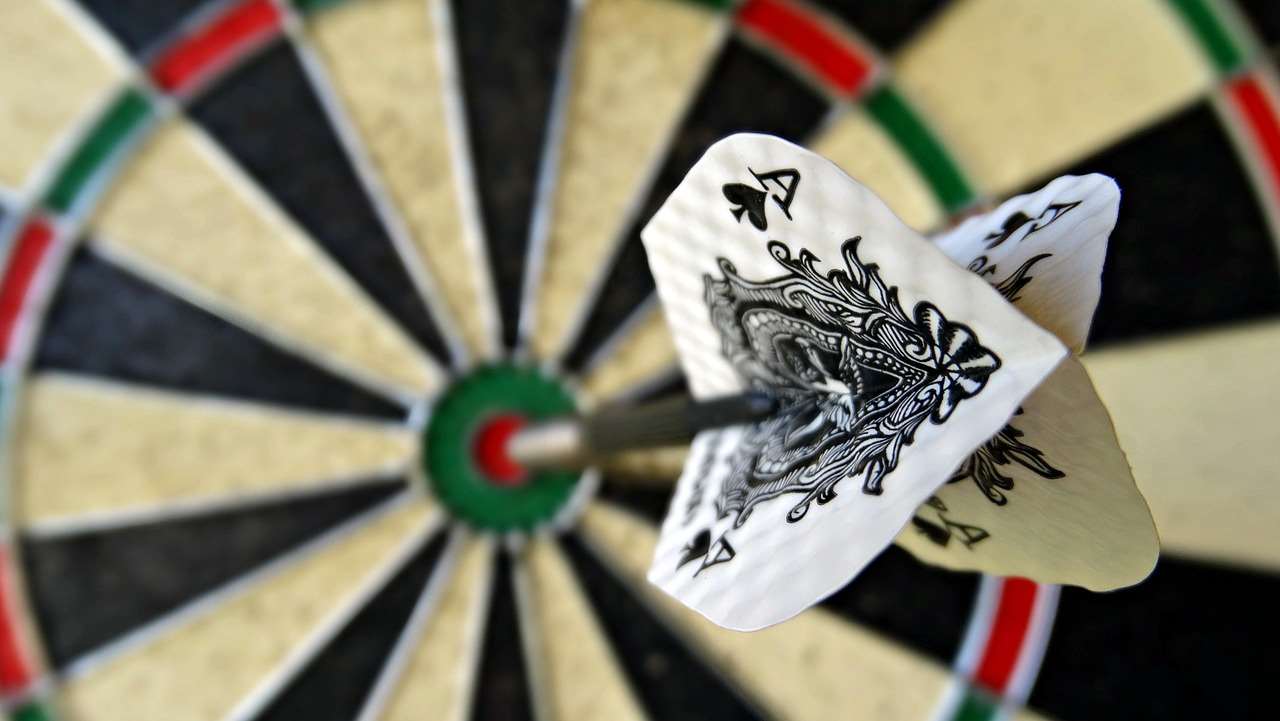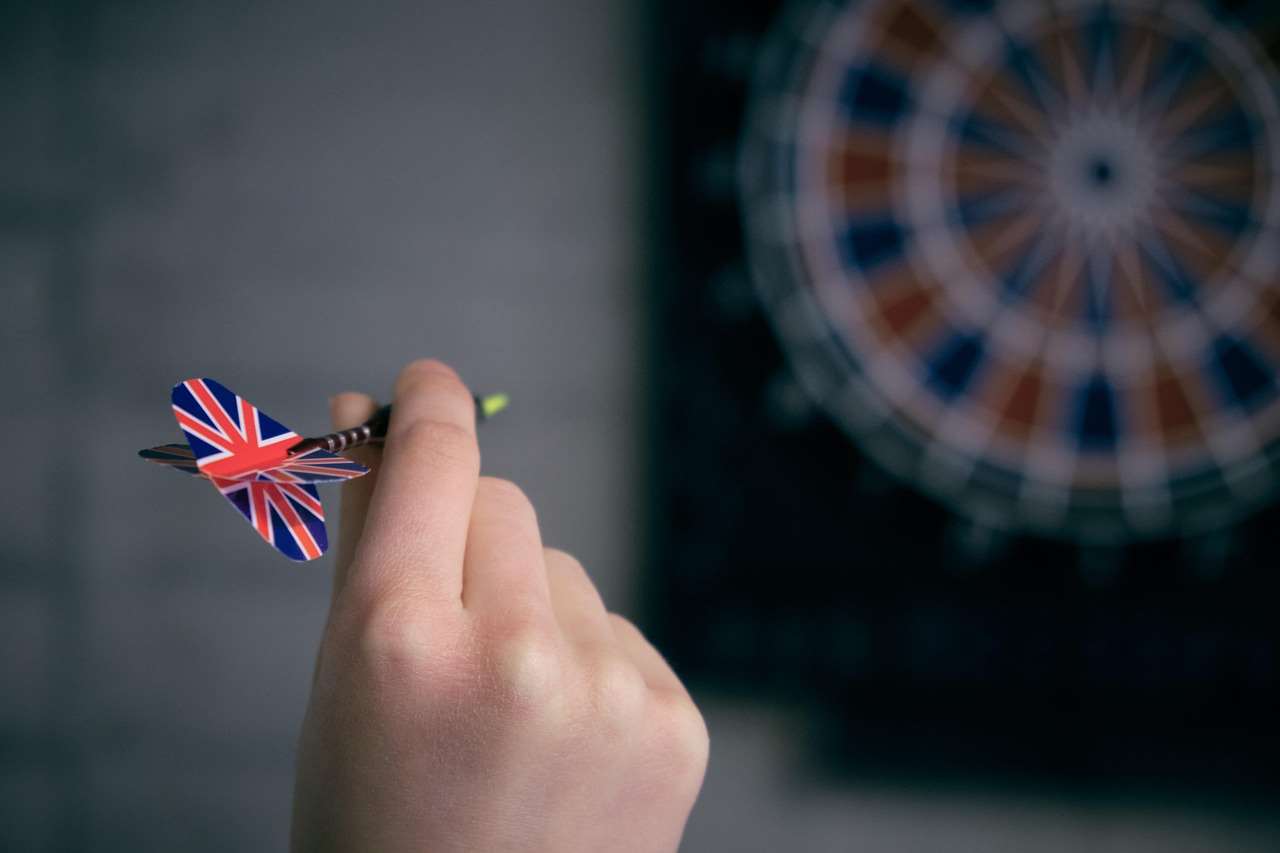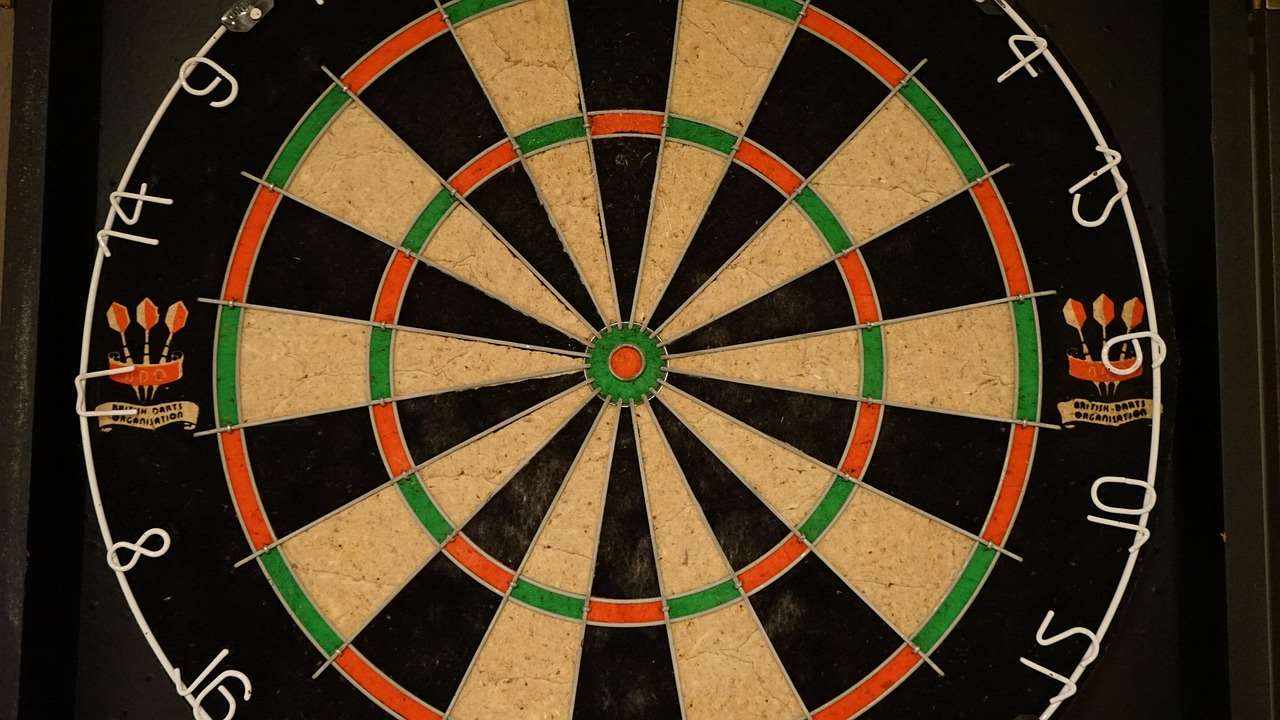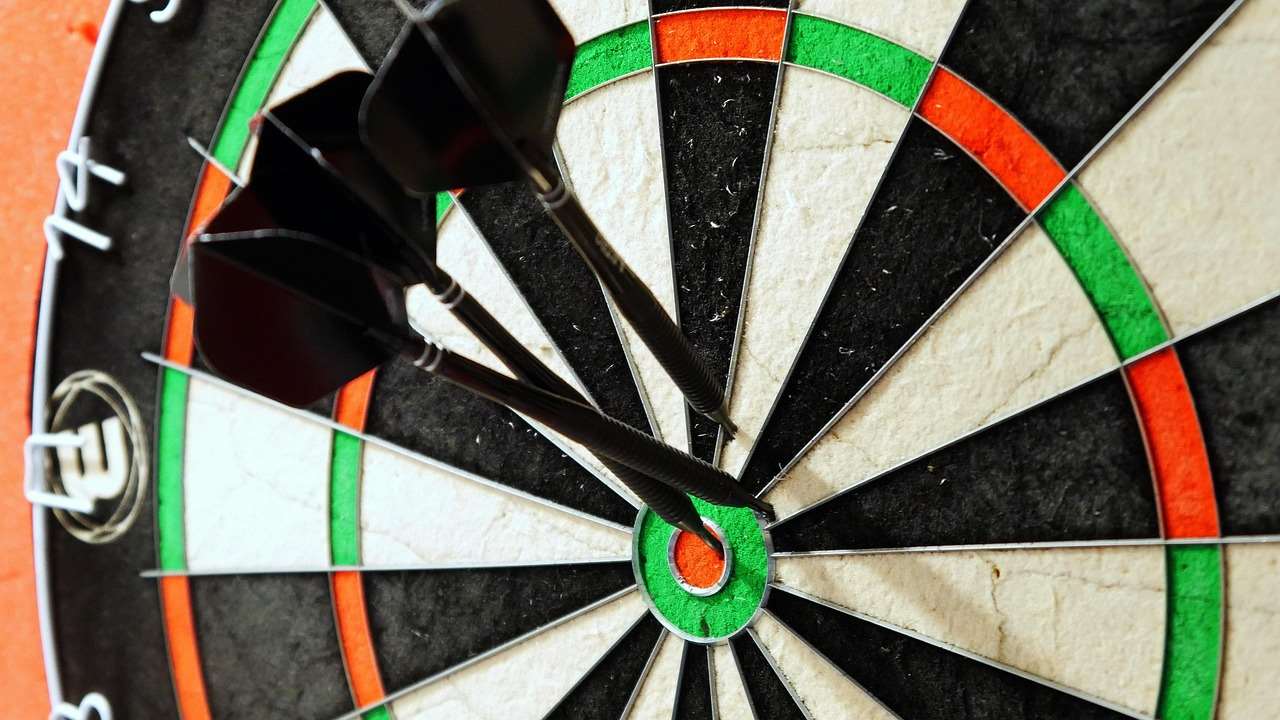Experiencing a sudden and inexplicable inability to throw darts accurately? You might be suffering from dartitis attack, a form of the yips affecting dart players, characterized by involuntary muscle spasms and anxiety. This article will explore the causes, symptoms, and effective strategies to overcome dartitis attack, helping you regain your confidence and throwing rhythm on the oche.
⚠️ Still Using Pen & Paper (or a Chalkboard)?! ⚠️
Step into the future! The Dart Counter App handles all the scoring, suggests checkouts, and tracks your stats automatically. It's easier than you think!
Try the Smart Dart Counter App FREE!Ready for an upgrade? Click above!
Understanding Dartitis Attack
Dartitis attack, often described as the “yips” in darts, is a frustrating condition that can affect players of all skill levels. It manifests as an involuntary jerk or twitch in the arm, hand, or fingers during the throwing motion, leading to inaccurate throws and significant mental distress. Unlike a technical flaw, dartitis is primarily a psychological issue rooted in anxiety and performance pressure.
While the exact cause of dartitis remains unclear, it’s generally believed to be a combination of factors, including:
- Performance anxiety: The fear of failure or disappointing oneself and others.
- Muscle tension: Excessive muscle contraction due to stress.
- Negative self-talk: Dwelling on past mistakes and anticipating future failures.
- Perfectionism: Striving for unattainable levels of accuracy.
- Change in throwing style: Sometimes an attempt to improve a flaw can trigger dartitis.
Recognizing these contributing factors is the first step towards managing and overcoming dartitis attack.

Recognizing the Symptoms of Dartitis Attack
Identifying the symptoms early can help you address dartitis attack before it becomes a chronic problem. Common signs and symptoms include:
- Involuntary muscle spasms: Jerky or twitching movements in the arm, hand, or fingers during the throw.
- Hesitation: Pausing or freezing mid-throw.
- Loss of control: Feeling unable to release the dart smoothly and accurately.
- Increased anxiety: Experiencing heightened stress and nervousness before and during matches.
- Avoidance behavior: Avoiding practice or competitive situations due to fear of failure.
- Negative thoughts: Constant self-criticism and dwelling on mistakes.
- Frustration: Feeling angry and discouraged by the inability to throw properly. An alternative can be to use an Automatic dart scoring app to make calculating less stressful.
If you experience several of these symptoms, it’s crucial to acknowledge the issue and seek strategies to manage dartitis effectively.
Strategies to Overcome Dartitis Attack
While there’s no guaranteed cure for dartitis attack, several techniques can help you regain control and improve your throwing performance. These strategies focus on reducing anxiety, retraining your muscles, and developing a more positive mindset.
Relaxation Techniques
Managing anxiety is paramount. Incorporate these relaxation techniques into your routine:
- Deep breathing exercises: Practice slow, deep breaths to calm your nerves and reduce muscle tension.
- Progressive muscle relaxation: Systematically tense and release different muscle groups to promote relaxation.
- Meditation and mindfulness: Focus on the present moment to reduce anxiety and improve mental clarity.
- Visualization: Mentally rehearse successful throws to build confidence.
Regular practice of these techniques can help you manage anxiety both on and off the oche, reducing the likelihood of a dartitis attack.

Retraining Your Throw
When dartitis sets in, retraining your throw can feel counterintuitive. However, the goal is to create new muscle memory and break the cycle of involuntary movements. Consider these techniques:
- Focus on the grip: Experiment with different grip styles to find one that feels comfortable and stable.
- Slow down your throw: Consciously slow down your throwing motion to regain control and accuracy.
- Isolate specific movements: Practice individual components of your throw, such as the stance, grip, and release.
- Use lighter darts: Lighter darts may require less force, potentially reducing muscle tension.
Patience and consistency are key when retraining your throw. Focus on gradual improvement rather than immediate results. Knowing the dart board height and distance is important to ensure correct practice.
Mental Strategies
A positive and resilient mindset is essential for overcoming dartitis attack. Implement these mental strategies:
- Challenge negative thoughts: Replace self-criticism with positive affirmations and realistic self-assessment.
- Focus on the process, not the outcome: Concentrate on executing your throw correctly rather than solely on the score.
- Embrace imperfection: Accept that mistakes are inevitable and learn from them.
- Set realistic goals: Focus on small, achievable goals to build confidence and momentum.
Remember that mental toughness is a skill that can be developed through consistent effort and self-compassion.
Seeking Professional Help
If dartitis attack persists despite your best efforts, consider seeking professional help. A sports psychologist or mental coach can provide personalized guidance and support to address the underlying psychological factors contributing to your condition. They can teach you advanced techniques for managing anxiety, building confidence, and improving mental resilience. There are different types of flights to aid the throw of your darts, like gepersonaliseerde flights darts.

Preventing Future Dartitis Attacks
Prevention is always better than cure. By adopting proactive strategies, you can reduce the risk of future dartitis attacks. These strategies include:
- Maintaining a healthy lifestyle: Getting enough sleep, eating a balanced diet, and exercising regularly can reduce stress and improve overall well-being.
- Practicing stress management techniques: Regularly engage in relaxation techniques such as deep breathing, meditation, and yoga.
- Building a strong support system: Surround yourself with positive and supportive people who can offer encouragement and understanding.
- Avoiding overtraining: Allow yourself adequate rest and recovery to prevent burnout and muscle fatigue.
- Prioritizing mental health: Seek professional help if you experience persistent anxiety or stress.
Remember that dartitis is often a symptom of underlying stress and anxiety. By addressing these issues proactively, you can protect yourself from future attacks.
The Role of Equipment
While dartitis attack is primarily a mental and neurological condition, your equipment can play a subtle role in either exacerbating or mitigating its effects. Finding the right setup that feels comfortable and promotes confidence is essential. This could involve experimenting with different:
- Dart weights: As mentioned earlier, lighter darts may be beneficial for some players, reducing the amount of force required and potentially lessening muscle tension. Conversely, some players find heavier darts more stable.
- Dart barrels: The shape and grip of the barrel can significantly affect your control and feel. Explore different textures and profiles to find what suits you best.
- Dart stems: Stem length and material can influence the dart’s flight characteristics and stability.
- Dart flights: Flight shape and size affect the dart’s aerodynamics and trajectory.
Don’t hesitate to experiment and find the equipment that feels most natural and comfortable in your hand. This can help to foster a sense of control and confidence, which can be crucial in managing dartitis attack.

Case Studies and Examples of Overcoming Dartitis
Hearing stories of other dart players who have battled and overcome dartitis attack can be incredibly encouraging and provide valuable insights. While individual experiences vary, common themes often emerge. Many players report success by:
- Taking a break: Stepping away from the game entirely for a period of time to reset mentally and physically.
- Focusing on fundamentals: Returning to the basics of their throwing technique and rebuilding their game from the ground up.
- Working with a sports psychologist: Gaining professional guidance to address the underlying psychological factors contributing to their dartitis.
- Adopting a more relaxed approach: Shifting their focus from winning to simply enjoying the process of throwing darts.
These case studies highlight the importance of perseverance, self-awareness, and a willingness to experiment with different strategies. Remember that overcoming dartitis attack is a journey, not a destination, and that setbacks are a normal part of the process.

Conclusion: Regaining Control and Enjoying Darts Again
Dartitis attack can be a devastating experience for any dart player, but it’s not insurmountable. By understanding the causes and symptoms, implementing effective coping strategies, and seeking professional help when needed, you can regain control of your throwing motion and rediscover the joy of playing darts. Remember to prioritize relaxation, retrain your throw, cultivate a positive mindset, and take proactive steps to prevent future attacks. Don’t give up – with persistence and dedication, you can overcome dartitis attack and continue to enjoy the sport you love. Consider getting in touch with our team for more useful tips and strategies to overcome dartitis and reignite your love for the game.
Hi, I’m Dieter, and I created Dartcounter (Dartcounterapp.com). My motivation wasn’t being a darts expert – quite the opposite! When I first started playing, I loved the game but found keeping accurate scores and tracking stats difficult and distracting.
I figured I couldn’t be the only one struggling with this. So, I decided to build a solution: an easy-to-use application that everyone, no matter their experience level, could use to manage scoring effortlessly.
My goal for Dartcounter was simple: let the app handle the numbers – the scoring, the averages, the stats, even checkout suggestions – so players could focus purely on their throw and enjoying the game. It began as a way to solve my own beginner’s problem, and I’m thrilled it has grown into a helpful tool for the wider darts community.